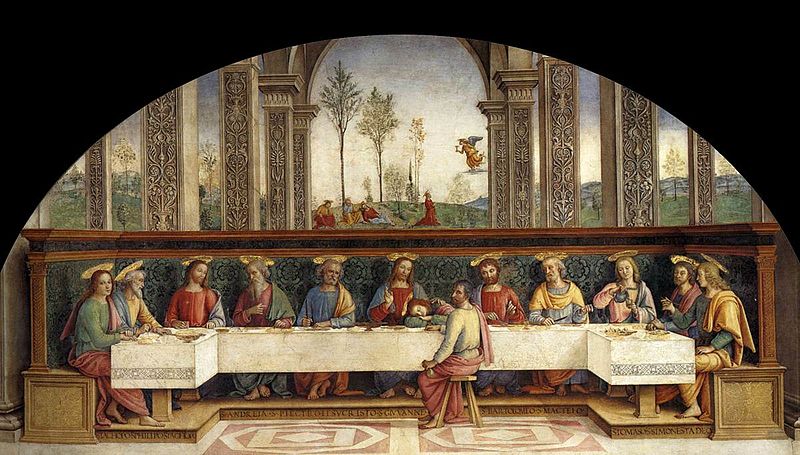Difference between revisions of "Last Supper (1496 Perugino), art"
Jump to navigation
Jump to search
| Line 9: | Line 9: | ||
[[Category:1496| Perugino]] | [[Category:1496|*Perugino]] | ||
[[Category:Art|1496 Perugino]] | [[Category:Art--1450s|1496 Perugino]] | ||
[[Category:Frescoes|1496 Perugino]] | [[Category:Frescoes|1496 Perugino]] | ||
[[Category: | [[Category:Last Supper (subject)|1496 Perugino]] | ||
[[Category:Jesus of Nazareth--art (subject)|1496 Perugino]] | |||
[[Category:John--art (subject)|1496 Perugino]] | |||
[[Category:Judas Iscariot--art (subject)|1496 Perugino]] | |||
[[Category:Jesus of Nazareth (subject)|1496 Perugino]] | [[Category:Twelve Apostles--art (subject)|1496 Perugino]] | ||
[[Category:John (subject)|1496 Perugino]] | |||
[[Category:Judas Iscariot (subject)|1496 Perugino]] | |||
[[Category:Twelve Apostles | |||
Revision as of 12:15, 28 November 2016
The Last Supper (1496) is a fresco by Pietro Perugino, at the Refectory of the Convento del Fuligno (Cenacolo del Fuligno) in Florence, Italy.
The fresco was made by Pietro Perugino between 1493 and 1496. Hidden for centuries by the clausura, the fresco was "rediscovered" and opened to the public after the suppression of the convent in 1800, and initially attributed to Raphael.
